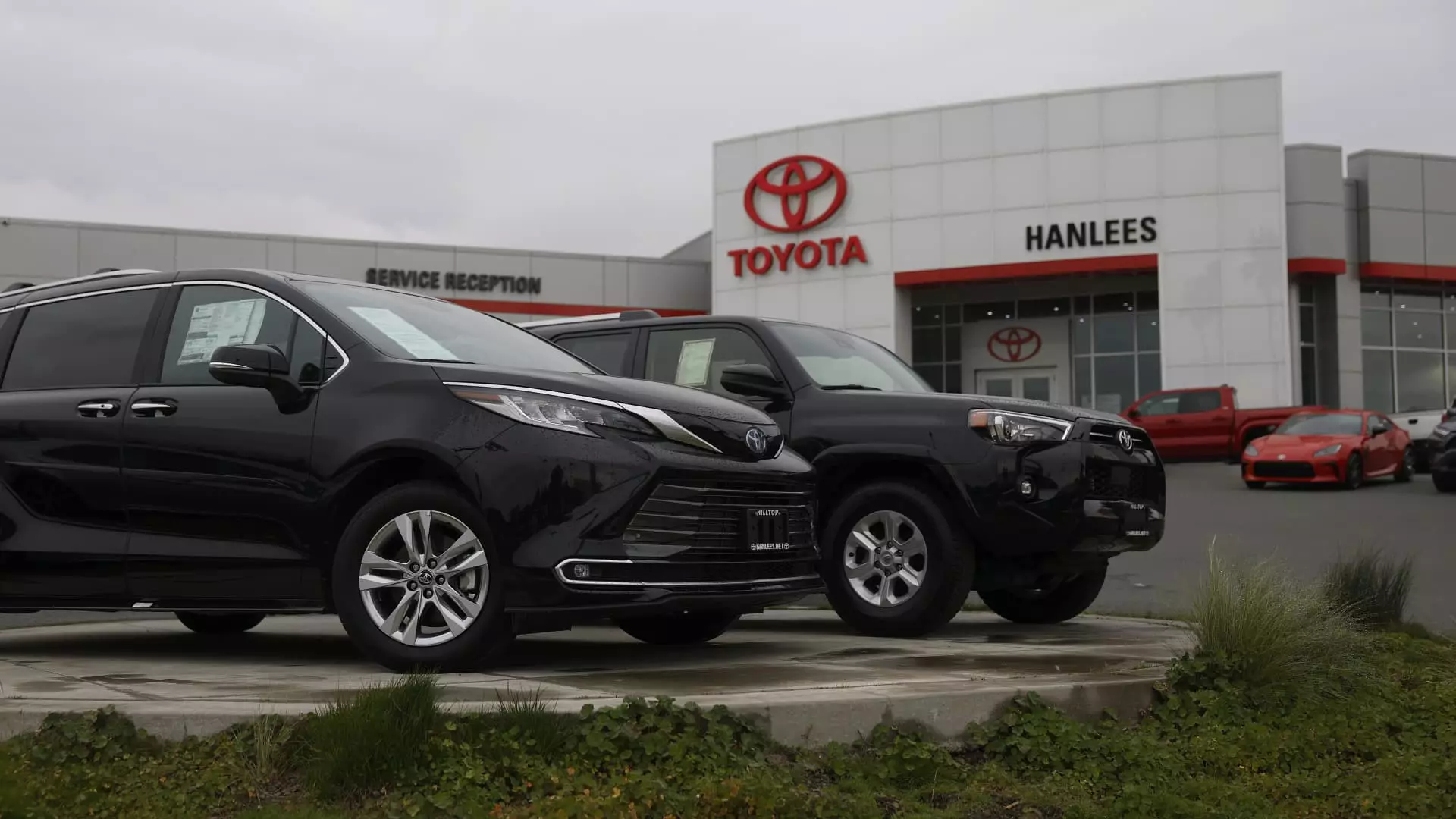The landscape of international trade has been shaken to its core with the recent announcement of sweeping 25% tariffs on imported automobiles not produced in the United States. This belligerent maneuver by President Donald Trump is not simply a choice; it’s a bold assertion of economic nationalism that threatens to dismantle decades of cooperative international trade and the global supply chain. The over-arching reality is that these tariffs don’t just impact a single industry; they have the potential to fracture relationships and restructure the automotive market landscapes across continents.
With the specter of these tariffs looming, it sends shockwaves through the business environment, particularly for Asian automakers who have thrived in the competitive U.S. market. Companies like Toyota and Nissan now face existential threats that could fundamentally alter their operations and profitability. The tumultuous downturn in their stock prices—Toyota plummeting 9.4% and Nissan 9.3% in the wake of this announcement—is indicative of the broader repercussions of such a unilateral action. This is not just a financial issue; it reflects the growing tension in a world still reeling from the COVID-19 pandemic and the economic ramifications it imposed on industries globally.
The U.S. Automotive Market: An Irreplaceable Cornerstone
In 2024, Asian automakers dominated the U.S. automotive market, clinching six out of the top eight sales volumes. This speaks volumes about the prevailing consumer preferences and the deep-rooted integration of Asian manufacturing with American consumption patterns. As mentioned, Toyota emerged at the top with 1.98 million vehicles sold, eclipsing American giants like Ford and Chevrolet. This dominance underscores a symbiotic relationship; the companies’ financial health is an oligopoly tethered to the American market, creating a precarious and complex web that could unravel with punitive tariffs.
What makes this situation alarming is the reality that major automakers are entwined in a web of dependencies that can’t be easily disentangled. The data from sources like S&P Global Mobility reveal that South Korea exported 1.4 million vehicles to the U.S. in 2024 alone. Japan’s exports were not far behind with 1.3 million. The magnitude of these figures indicates that any imposition of tariffs will not merely raise prices; it could inherently jeopardize the entire business model that has underpinned these corporations for years. It raises the ominous question: should these duties remain in place, which manufacturers will survive in the long run?
Shifting Production: An Unrealizable Strategy
In response to these punitive measures, many automakers are likely contemplating relocating their productions to avoid tariffs. However, as industry experts suggest, relocating manufacturing infrastructure is a herculean task fraught with complexity and expense. Joe McCabe aptly points out that establishing new production facilities isn’t an overnight solution. It could take years and require billions of dollars—costs that many companies simply cannot absorb in such a volatile marketplace.
Moreover, the gamble of moving production domestically only complicates the existing supply chain dynamics further. Richard Kaye, a portfolio manager at Comgest, makes an astute observation: the people in the industry are tackling questions of economics, pricing, and consumer behavior in an already strained environment. Some manufacturers may opt to absorb the costs instead of passing them onto consumers, aiming to retain some semblance of market share. But let’s be honest—this will inevitably hurt profitability and may impact innovation—the very engines of growth in an industry that prides itself on technological advancement.
Unexpected Winners amidst the Chaos
Interestingly, amidst the pessimism that surrounds the major players, it is smaller firms like Suzuki that shine as unexpected beneficiaries. Kaye notes that Suzuki, which refrains from selling vehicles in the U.S., has been fortuitous and witnessed stock resilience while competitors face plummeting share values. This stark contrast serves as a stark reminder that while the giants grapple with uncertainty, embracing agility could be the key for survival.
While the tariffs loom large, the reality remains that the U.S. market thrives on the diversity and competition brought forth by foreign automakers. Tariff-induced isolationism is a dangerous road that could create unforeseen backlash—not just against Asian manufacturers, but also against the very consumers these policies claim to safeguard. The allure of economic independence may come at the cost of diminished choices and higher prices, leading us to ponder: is this nationalism truly beneficial for the average American consumer? Or is it a reckless game that threatens the foundation of global trade and prosperity?

Leave a Reply